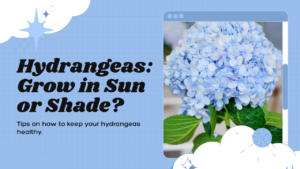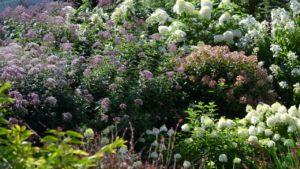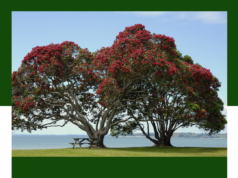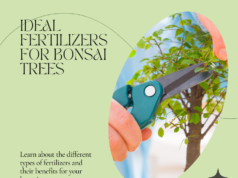
Hydrangeas are a popular and beautiful addition to any garden. But if you’re wondering about the ideal growing conditions for these plants, specifically whether they prefer sun or shade, then you’ve come to the right place. Understanding the sunlight requirements and shade preferences of hydrangeas is key to ensuring they thrive in your garden.
Key Takeaways:
- Hydrangeas require specific growing conditions like soil acidity and moisture levels.
- Hydrangea varieties have varying sunlight preferences.
- The hydrangea macrophylla thrives best in shade, while the smooth hydrangea tolerates both sun and shade.
- Remember to assess your garden’s sunlight exposure and make necessary adjustments for optimal growth.
- Proper care and maintenance will help promote healthy growth and vibrant blooms.
Background and Growing Conditions of Hydrangeas
Hydrangeas are beloved ornamental plants that can brighten any garden with their large and vibrant flower clusters. However, to cultivate healthy and thriving hydrangeas, you need to understand their growing conditions. These factors can influence everything from color and bloom size to stem strength and foliage health.
Soil Acidity
Hydrangeas prefer acidic soil with a pH level of about 5.5 to 6.5. Soil that is too alkaline can cause them to produce pink flowers instead of their signature blue or purple colors. Conversely, soil that is too acidic may result in weaker plants or stunted growth. Test your soil’s pH levels using a soil testing kit or by consulting a professional gardener.
Moisture Levels
Hydrangeas need moderate to high levels of moisture to thrive, especially during the warmer months. Make sure your hydrangeas receive enough water to maintain consistently moist soil. However, avoid overwatering, which can cause root damage and promote fungal growth. Consider planting them in areas with good drainage or amending the soil with organic matter to improve its water retention.
Temperature
Hydrangeas prefer cooler temperatures and thrive in regions with mild summers and winters. However, some varieties can tolerate colder climates better than others. Protect your plants from frost and freezing temperatures by covering them with blankets or gardening fleece. Conversely, hydrangeas can suffer stress or overheating if exposed to intense heat or direct sunlight for long periods.
Hydrangea Variety
Hydrangea varieties have distinct growing conditions and can have varying preferences when it comes to sunlight and shade. For example, the hydrangea macrophylla, also known as the bigleaf hydrangea, prefers shade and may suffer from sunburn, causing their leaves to wilt or turn brown. Meanwhile, hydrangea arborescens, or smooth hydrangea, can grow well in both sun and shade, making them versatile options. Finally, hydrangea paniculata, or panicle hydrangea, requires more sunlight but can still tolerate partial shade.
Sunlight Requirements of Hydrangeas
Understanding the sunlight preferences of hydrangeas is crucial to creating an optimal growing environment for these lovely plants. As you explore different hydrangea varieties, keep in mind that each has unique sun and shade preferences. Let’s take a closer look.
Hydrangea macrophylla (Bigleaf Hydrangea)
The bigleaf hydrangea prefers shade and is best suited for growing in an area with filtered light. Excessive exposure to direct sunlight can cause damage to its delicate foliage and flowers. If you want to plant one in a sunny spot, choose an area that receives morning sun or filtered light, and is protected from the hot afternoon sun.
Hydrangea arborescens (Smooth Hydrangea)
The smooth hydrangea is a more versatile option and can thrive in both sun and shade. It’s adaptable to different growing conditions, making it an ideal choice for many gardeners. Whether you have a sunny or partially shaded area, the smooth hydrangea is sure to perform beautifully.
Hydrangea paniculata (Panicle Hydrangea)
The panicle hydrangea requires more sunlight than the bigleaf hydrangea but can still tolerate partial shade. This variety tends to perform better with several hours of direct sunlight each day. If you’re planting a panicle hydrangea in a shaded area, select one that can handle a greater amount of shade and ensure that it still gets enough sunlight throughout the day to grow successfully.
Now that you know the sunlight preferences of different hydrangea varieties, you can choose the best one for your garden. Don’t forget to assess the sunlight exposure in your garden and make any necessary adjustments, like providing shade or planting taller plants, to ensure that they grow successfully.
Determining the Optimal Growing Conditions for Hydrangeas

Hydrangeas are beautiful plants that need specific growing conditions to thrive. To ensure that your hydrangeas grow well, you need to determine the best growing conditions for them. One of the most important factors to consider is your garden’s sunlight exposure.
To assess your garden’s sunlight exposure, you should observe how much direct sunlight different areas of your garden receive throughout the day. This will help you identify the spots that receive full sun, partial shade, or full shade. Once you have identified these areas, you can determine which spots are best for your hydrangeas.
Adjusting the environment is another crucial factor in hydrangea cultivation. You can control the amount of sunlight your plants receive by providing shade with umbrellas or shade cloths. You can also plant taller plants around your hydrangeas to provide some shade. This will enable you to create the optimal growing conditions for your hydrangeas and ensure that they thrive in your garden.
Tips for Assessing Your Garden’s Sunlight Exposure
When assessing your garden’s sunlight exposure, keep the following tips in mind:
- Observe the sun’s path: The sun’s position changes throughout the day. Observe how the sun moves over your garden and take note of the areas that receive the most sunlight and shade.
- Check the orientation of your garden: The orientation of your garden can affect the amount of sunlight it receives. Gardens that face south receive more sunlight than those that face north.
- Consider your garden’s surroundings: Trees, buildings, and other structures can cast shade over your garden. Observe the areas that are shaded by these structures and see if they receive any sunlight during the day.
Assessing Your Garden’s Sunlight Exposure
| Time of Day | Location 1 (Full Sun) | Location 2 (Partial Shade) | Location 3 (Full Shade) |
|---|---|---|---|
| Morning | Bright sunlight | Some filtered light | Very little light |
| Noon | Intense sunlight | Bright, indirect light | Filtered light |
| Afternoon | Intense sunlight | Some filtered light | Very little light |
By assessing your garden’s sunlight exposure and adjusting the environment accordingly, you can create optimal growing conditions for your hydrangeas. These beautiful flowering plants require specific conditions to thrive, and by understanding their needs, you can ensure that they grow healthy and vibrant in your garden.
Care and Maintenance Tips for Hydrangeas
Hydrangeas are beautiful and vibrant plants that require proper care and maintenance to ensure healthy growth. Here are some essential tips for watering, fertilizing and pruning your hydrangeas.
Watering Requirements for Optimal Growth
Watering is crucial for hydrangeas, especially during dry periods or when the plants are newly established. Ensure that the soil is consistently moist but not waterlogged. To determine if it’s time to water your hydrangeas, check the top inch of soil. If it feels dry to the touch, it’s time to water.
Fertilizing Guidelines
Fertilizing your hydrangeas will promote healthy growth and vibrant blooms. Use a slow-release, balanced fertilizer during the growing season, typically between early spring and early fall. Apply the fertilizer according to the manufacturer’s instructions, taking care not to over-fertilize, as this can lead to burnt foliage or stunted growth.
Pruning Tips
Pruning is necessary to remove dead or damaged branches and to maintain the desired shape and size of the plant. Deadhead spent blooms throughout the growing season to encourage new blooms. The best time to prune hydrangeas is in late winter or early spring before new growth appears. Be sure to use sharp, sterilized pruning shears and only remove ⅓ of the plant’s total growth.
By following these care and maintenance tips, you can ensure your hydrangeas thrive and exhibit their vibrant beauty to the fullest.
Hydrangea Varieties and Their Sun/Shade Preferences

Choosing the right hydrangea variety for your garden involves understanding their specific sunlight and shade preferences. Below are the three most common hydrangea varieties and their growing requirements:
| Hydrangea Variety | Sunlight Preference | Shade Tolerance |
|---|---|---|
| Hydrangea macrophylla (Bigleaf hydrangea) | Partial to full shade | High tolerance to shade |
| Hydrangea arborescens (Smooth hydrangea) | Partial to full sun | High tolerance to sun and shade |
| Hydrangea paniculata (Panicle hydrangea) | Partial to full sun | Moderate tolerance to partial shade |
The bigleaf hydrangea prefers partial shade with high tolerance to shade, making it a great choice for gardens with limited sunlight. It can handle some morning sun or filtered light but should be protected from intense afternoon sun.
The smooth hydrangea can grow well in both sun and shade, making it a versatile option for different areas of your garden. It exhibits high tolerance for both sun and shade.
The panicle hydrangea requires more sunlight than the bigleaf hydrangea but can still tolerate partial shade. This variety exhibits moderate tolerance for partial shade, making it an ideal choice for gardens with some shade.
Sun and Shade Preferences of Hydrangea Varieties
Understanding the sun and shade preferences of different hydrangea varieties is key to creating a stunning garden. Let’s explore the specific sunlight requirements of the most popular hydrangea plants:
| Hydrangea Variety | Sunlight Preferences |
|---|---|
| Hydrangea macrophylla (bigleaf hydrangea) | Best suited for shade and is more tolerant of shade than direct sunlight. Can handle some morning sun or filtered light but should be protected from intense afternoon sun. |
| Hydrangea arborescens (smooth hydrangea) | Can grow well in both sun and shade, making it a versatile option for different areas of your garden. |
| Hydrangea paniculata (panicle hydrangea) | Requires more sunlight than the bigleaf hydrangea but can still tolerate partial shade. |
As you can see, each variety has its own unique sun and shade preferences. Consider the amount of sunlight your garden receives when choosing the right hydrangea for your space. If you have a shady garden, a bigleaf hydrangea could be the perfect choice. On the other hand, if your garden receives plenty of sunlight, you might want to opt for a panicle hydrangea. Whatever you choose, make sure to provide the right growing conditions for your hydrangeas so that they can thrive.
FAQ
Q. Do hydrangeas grow best in sun or shade?
A. Hydrangeas have varying sunlight preferences depending on the variety. The hydrangea macrophylla, also known as the bigleaf hydrangea, is best suited for shade and is more shade-tolerant than other varieties. The hydrangea arborescens, or smooth hydrangea, can grow well in both sun and shade. The hydrangea paniculata, or panicle hydrangea, requires more sunlight but can still tolerate partial shade.
Q. What are the sunlight requirements for hydrangeas?
A. The specific sunlight requirements for hydrangeas depend on the variety. Generally, the bigleaf hydrangea prefers shade and should be protected from intense afternoon sun. The smooth hydrangea can tolerate both sun and shade. The panicle hydrangea requires more sunlight but can still tolerate partial shade. Assessing your garden’s sunlight exposure can help determine the optimal conditions for your hydrangea plants.
Q. How can I determine the optimal growing conditions for hydrangeas?
A. To determine the best growing conditions for your hydrangeas, assess your garden’s sunlight exposure. Observe how much direct sunlight different areas of your garden receive throughout the day. This will help you identify spots that receive full sun, partial shade, or full shade. You can then make adjustments, such as providing shade with umbrellas or shade cloths or planting taller plants to provide some shade.
Q. What are the care and maintenance tips for hydrangeas?
A. Hydrangeas require proper care and maintenance for healthy growth. They need regular watering, especially during dry periods or when newly planted. Ensure the soil is consistently moist but not waterlogged. Fertilize your hydrangeas to promote healthy growth and vibrant blooms. Pruning is also necessary to remove dead or damaged branches and maintain the desired shape and size of the plant.
Q. Which hydrangea varieties have sun or shade preferences?
A. The bigleaf hydrangea, or hydrangea macrophylla, is best suited for shade and is more shade-tolerant than other varieties. The smooth hydrangea, or hydrangea arborescens, can grow well in both sun and shade. The panicle hydrangea, or hydrangea paniculata, requires more sunlight but can still tolerate partial shade.
Conclusion
Congratulations! You now know the sunlight preferences and shade requirements of different hydrangea varieties. To summarize, hydrangeas thrive in different levels of sunlight and shade, depending on their variety. The bigleaf hydrangea is best suited for shade, the smooth hydrangea can tolerate both sun and shade, while the panicle hydrangea requires more sunlight but can still tolerate partial shade.
By assessing your garden’s sunlight exposure and making necessary adjustments, you can provide the optimal growing conditions for your hydrangeas. Remember to maintain proper care and maintenance, including watering, fertilizing, and pruning, to ensure the healthy growth of your hydrangeas.
Enjoy watching your beautiful hydrangea plants grow and bloom in their ideal growing conditions!
Conclusion: Summary of the Sun and Shade Preferences of Different Hydrangea Varieties
Congratulations on learning about the sunlight preferences and shade requirements of hydrangea plants! By understanding these specific needs, you can create a conducive environment for these beautiful flowering plants to thrive in your garden.
Recall that the hydrangea macrophylla, or bigleaf hydrangea, prefers shade and is more tolerant of shade than direct sunlight. The hydrangea arborescens, or smooth hydrangea, can grow well in both sun and shade. Finally, the hydrangea paniculata, or panicle hydrangea, requires more sunlight than the bigleaf hydrangea, but it can tolerate partial shade.
Remember to assess your garden’s sunlight exposure and make any necessary adjustments to provide the optimal growing conditions for your hydrangeas. Proper care and maintenance, including watering, fertilizing, and pruning, are also crucial for healthy growth and vibrant blooms.
With these tips in mind, you can enjoy the beauty and elegance of these stunning plants all season long!
















